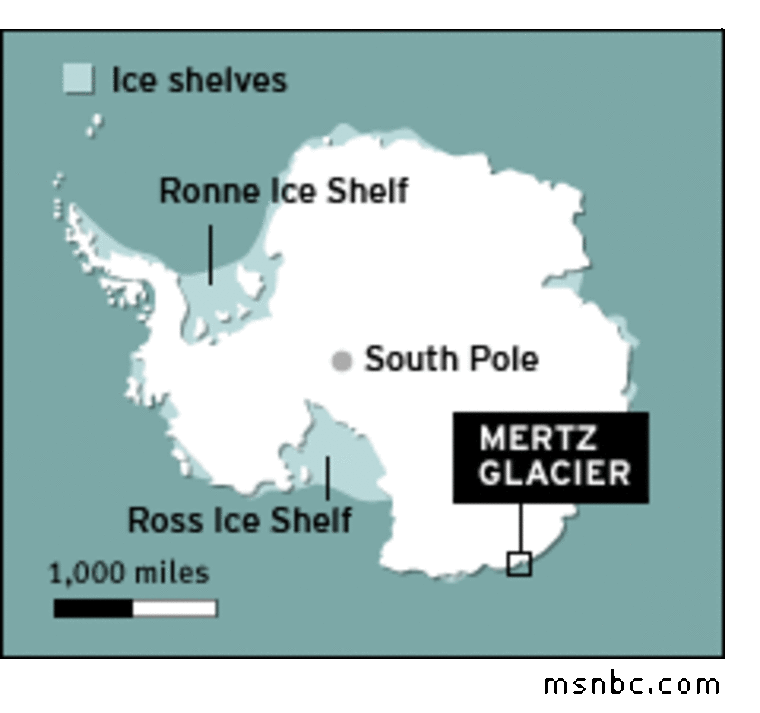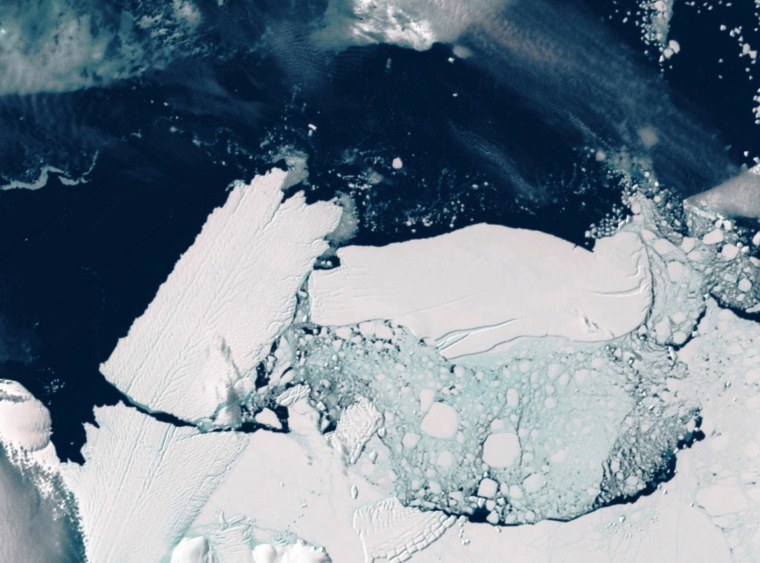An iceberg the size of Luxembourg has broken off from a glacier in Antarctica after being rammed by another giant iceberg, scientists said Friday, in an event that could affect ocean circulation patterns.
The 965-square-mile iceberg broke off earlier this month from the Mertz Glacier's 100-mile floating tongue of ice that sticks out into the Southern Ocean.
The collision has since halved the size of the tongue that drains ice from the vast East Antarctic ice sheet.
"The calving itself hasn't been directly linked to climate change, but it is related to the natural processes occurring on the ice sheet," said Rob Massom, a senior scientist at the Australian Antarctic Division and the Antarctic Climate and Ecosystems Cooperative Research Center in Hobart, Tasmania.

Both organizations, along with French scientists, have been studying existing giant cracks in the ice tongue and monitored the bumper-car-like collision by the second iceberg, B-9B. This 60-mile-long slab of ice is a remnant of an iceberg of more than 1,900 square miles that broke off, or calved, in 1987, making it one of the largest icebergs ever recorded in Antarctica.
The Mertz glacier iceberg is among the largest recorded for several years, at about two-thirds the size of Rhode Island.
In 2002, an iceberg about 120 miles long broke off from Antarctica's Ross Ice Shelf. In 2007, an iceberg roughly the size of Singapore broke off from the Pine Island Glacier in West Antarctica.
'Pretty big nudge'
The two icebergs are now drifting together about 60 to 90 miles off Antarctica following the collision on Feb. 12 or Feb. 13, said Australian Antarctic Division glaciologist Neal Young.
"It gave it a pretty big nudge," Young said of the icebergs' collision. "They are now floating right next to each other."
Oceans act like a giant flywheel for the planet's climate by shifting heat around the globe via myriad currents above and below the surface.
Massom said the shearing off of the ice tongue and the presence of the Mertz and B-9B icebergs could affect global ocean circulation.
The area is an important zone for the creation of dense, salty water that is a key driver of major worldwide currents.
Experts said with part of the glacier gone, the area could fill with sea ice, which would disrupt the ability for the dense and cold water to sink. This sinking water is what spills into ocean basins and feeds the global ocean currents with oxygen.
Masson said: "Removal of this tongue of floating ice would reduce the size of that area of open water, which would slow down the rate of salinity input into the ocean and it could slow down this rate of Antarctic bottom water formation," he said.
As there are only a few areas in the world where this occurs, a slowing of the process would mean less oxygen supplied into the deep currents that feed the oceans.
"There may be regions of the world's oceans that lose oxygen, and then of course most of the life there will die," said Mario Hoppema, chemical oceanographer at the Alfred Wegener Institute for Polar and Marine Research in Germany.
